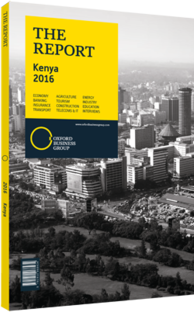Gideon Muriuki, Group Managing Director and CEO, Co-operative Bank of Kenya; James Mwangi, Group Managing Director and CEO, Equity Bank; and Joshua Oigara, Group CEO, Kenya Commercial Bank: Interview

Interview: Gideon Muriuki, James Mwangi, Joshua Oigara
To what extent are you expecting to see consolidation in the Kenyan banking market over the short and medium terms?
GIDEON MURIUKI: Since the central bank decided to raise the minimum capital requirements to KSh5bn ($55m), we anticipate consolidation in the sector, especially amongst the smallest banks. A well-capitalised banking sector is good for the economy, and we support the move by the government to raise the capital requirements. The question, however, is the time-frame over which this is expected to occur. Three years is quite a short period for some of the smaller banks to increase their capital by 400%. We expect these smaller banks to come together to form larger banks, but ones that continue serving niche markets.
JAMES MWANGI: The cost of capital is what will drive consolidation. Capital is very expensive, and for smaller banks it is prohibitively so. Out of necessity, it is important to drive consolidation in the market. I think 43 banks is too many for an economy valued at $55bn and for a country with an adult population of 18m. Essentially, the consolidation we are seeing now was just a question of time. If you look at South Africa or Nigeria – economies much larger than Kenya’s – they have far fewer banks than Kenya does. Around 15-18 banks would be a healthy range for our economy.
JOSHUA OIGARA: There could have been a natural consolidation in the sector, especially given the strategy to move towards financing larger projects, particularly in the energy, infrastructure and mining sectors. This consolidation, however, will be anchored on the central bank’s initiative to raise capital requirements for banks, and it is our view that many of the country’s banks will not be able to reach the required levels over the next three years. The benefit of larger banks will of course be a stronger financial sector, but this may be achieved at the expense of the small and mid-sized banks. But better-capitalised banks will be able to weather global macro-economic shocks and be a stronger catalyst for re-imagining the growth momentum in the East Africa region.
Given the rapid increase in technology-fuelled growth, what is the role for brick-and-mortar branch expansion in the future?
MWANGI: What the industry has done by moving further into virtual and mobile banking is disrupt itself before the technology companies could unsettle it. So we are going to see banks actually become technology companies that offer a full array of financial solutions. In such circumstances, I do not see a strong future for the brick-and-mortar segment. Of course physical banks will continue to have a space, but it will be limited to advisory services, large deals that need to be negotiated or the pooling of bank activities. Banking to a greater extent will be done on third -party devices and establishments. If you look at the number of transactions currently done at the branch level, it is only about 25%. Technology will fuel future expansion as customers become more comfortable with mobile or alternative banking methods.
MURIUKI: Banks are increasingly looking to divert clients from their brick-and-mortar locations to alternative banking channels. Some key services that were originally done at the branch level can now be digitised. The focus right now is on expansion via ICT platforms, and physical expansion will be limited. That said, to really make your presence known in the counties and remote areas of the country, it is very important that the local community see a physical presence of the bank, this is why the industry has seen such aggressive branch expansion over the past few years. Future expansion will be primarily via technology, and we see that the phase of brick-and-mortar expansion will now be restricted to one or two branches a year. The move towards digital services will also be extremely valuable in terms of cross-selling products to existing customers. It offers banks a valuable means to get a lot more value from their existing clients, which is the low-hanging fruit.
OIGARA: The industry has seen aggressive expansion of branch networks in past years. The branches still remain for relationship management and information exchange. Now if you look at technology and innovation, it has become a key driver in expanding and extending financial services. Mobile technology channels offer rapid access to information, including credit information, allowing for quick lending decisions. Technology has fuelled a huge growth in the client base of all banks, which has occurred much more quickly than would have ever been possible via traditional banking channels. Technology will continue to transform the industry and deeper financial inclusion.
How can bank financing be made more accessible for small and medium-sized enterprises (SMEs)?
OIGARA: In terms of SME lending, Kenya is way ahead of most of the other markets classified as frontier or emerging. In terms of general lending across the country, about 25-30% of it is directed to SMEs, which is much higher than the levels seen in other markets in Africa. Now the challenge is to help these SMEs grow, to plug into the entire value chain of their businesses and to be able to compete with the larger organisations in the country. This requires innovation and technology. We already see very strong SMEs in agriculture, technology, transport, trade and manufacturing. Kenya has been able to unlock SME lending by utilising unique financial structures that no longer rely strictly on the use of collateral. This sort of commercial innovation is essential to unlock the potential of start-ups and young companies. Partnerships with the government, as well as with international bodies such as the International Finance Corporation, are critical to accelerate the growth momentum.
MURIUKI: The cooperative movement has been one of the most important drivers of financial deepening, and the opening up of larger sections of the Kenyan population to banking services, because it offers flexibility that is not available with other financial institutions. Financing for SMEs is available in the Kenyan market. SMEs represent a significant portion of our loan book and the share has been growing. A credit facility is always accessible for an SME with proper cash flows, or one that is able to demonstrate the ability to pay back a loan. The issue has always been about charging the appropriate interest rates. Given the decline of the shilling, the central bank has raised it’s main lending rate, so at this point lowering interest rates is not possible. We are now seeing a big push across the industry towards increasing product offerings, as many clients at the country’s largest banks use only a single product. The sector is now shifting to a customer-centric model, which should expand access to greater variety of additional products.
MWANGI: I would like to say that a lack of affordability and accessibility for SME financing in Kenya might not be supported by data. In a country of 43m people and an adult population of 18m, you have 28m bank accounts, meaning about 10m more accounts than the adult population. According to this data, a high level of accessibility has been achieved. In terms of affordability, the price of financial services is tied to two things, namely inflation and interest rates. In a country where the central lending rate has reached 11.5% and inflation hovers around 6%, there is simply no room to realistically lower interest rates because they are tied to macroeconomic movements beyond the industry’s control. The ultimate possibility of lower costs will come from consolidation and the emergence of larger banks, economies of scale and cost-effective technologies. The recent move by the government to increase capital requirements from KSh1bn ($11m) to KSh5bn ($55m) is a positive move and will incentivise larger banks that will be able to pass lower charges on to borrowers and consumers.
You have reached the limit of premium articles you can view for free.
Choose from the options below to purchase print or digital editions of our Reports. You can also purchase a website subscription giving you unlimited access to all of our Reports online for 12 months.
If you have already purchased this Report or have a website subscription, please login to continue.

